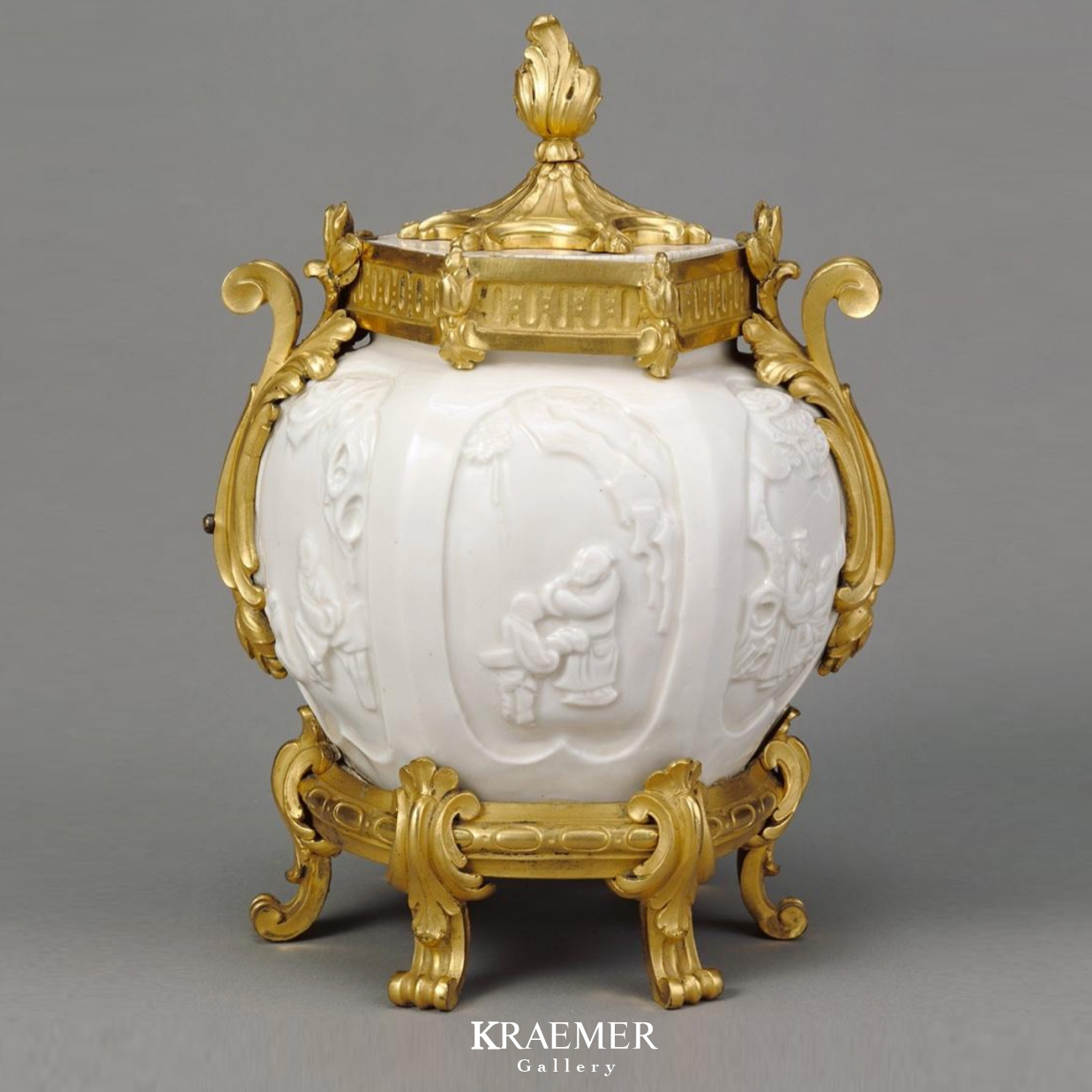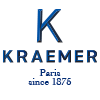IN THE MUSEUMS
Pot-pourri vase in white Chinese porcelain,
adorned with a chased and gilded bronze frame
Louis XV period / Kangxi period (porcelain)
Henry Ford II Collection
J. Paul Getty Museum, Los Angeles.
Provenance: Kraemer Gallery

This small white porcelain pot with molded decoration, hexagonal in shape, is decorated with cartridges with characters.
Mounted in chased and gilded bronze with leafy feet and connected to the porcelain by an acanthus leaf (Kangxi period), it is topped with a lid.
Foliage motifs with scrolls in chased and gilded bronze serve as handles.
Originally, it was probably a teapot but the handle and spout were removed or broken during its transport to Europe.
In order to hide breaks or holes, the bronze mounts used to hide them became ornaments from Louis XIV period.
European passion for Chinese porcelain was so great that traders imported huge quantities of porcelain objects in the 18th century despite a long and perilous journey by ship.
In 1752, for example, a ship heading to Europe sank with 223,303 pieces of porcelain on board, showing the importance of 18th-century trade between Asia and Europe.

